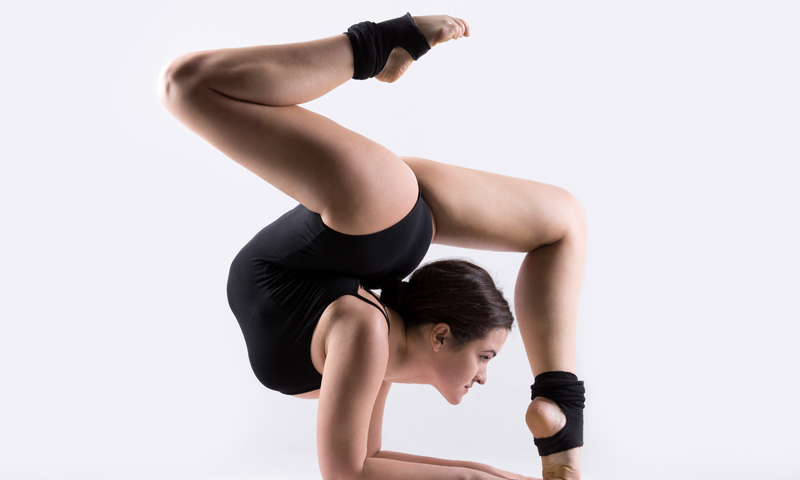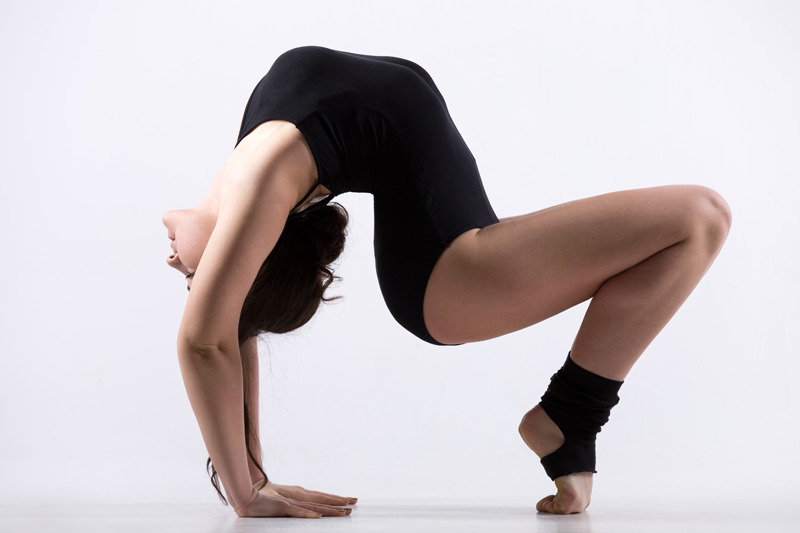
What is Core Power Yoga?
27th April 2018
Top 10 Yoga Poses Infographic
3rd May 2018The Most Incredible Yoga Poses

Boasting a wide array of health benefits, yoga is popular all over the world. Traditionally, the practice consists of thousands of different postures; however, practising all of them can seem almost impossible – especially for those with a busy schedule. Thankfully, you don’t need to. Practising just a few great poses can leave you with more energy, better health, and decreased stress levels. In this article, we explore some of the most incredible yoga poses in more detail. If you’re interested in practising the postures below, it’s worth picking up some flexible yoga pants for best results.
Downward Facing Dog
One of the most renowned postures of all time, Downward Facing Dog is popular for a reason. According to many yogis, this posture provides the ‘whole package’ when practised regularly. Working to strengthen the arms, shoulders, and legs, it is ideal for those who exercise regularly. The asana is also beneficial for those with back pain; stretching out the spine, Downward Facing Dog can help to relieve tension from the lower, middle, and upper back. Additionally, the asana is classed as an inversion. This type of posture reverses the flow of blood by working against gravity. The benefits of this include cleansing of the circulatory and lymphatic systems.
To practice Downward Facing Dog, start by standing tall. When you’re ready, slowly bend at the waist and bring your upper body towards the ground. Place your palms securely on the mat to make your body form a triangle. To maintain balance, keep your spine straight and spread your fingers apart. You are now in Downward Facing Dog. Hold the posture for around 30 seconds whilst breathing deeply.
Garland Pose
It’s not uncommon to spend most of the day with your hips at 90 degrees – especially if you work in an office. If the right precautions are not taken, sitting in this position can cause issues such as pain and stiffness in the joints. Thankfully, Garland Pose works to stretch the hips, spine, and inner thighs, keeping your joints happy and healthy.
To practice Garland Pose, stand tall with your feet directly beneath your hips. Keeping your spine as straight as possible, push your hips back and down as if you’re sitting in a chair. You are in Garland Pose. For best results, bring your hips as low as you can without bending your spine. To make the posture easier, try placing a rolled-up towel beneath your heels; this will stop them from lifting off the ground. To further open your hips, bring your palms together in front of your chest and push your elbows into the inner knees.
Plank Pose
A popular asana amongst athletes, Plank Pose works to build strength in the core, legs, arms, wrists, and shoulders.
To practice this asana, begin in Downward Facing Dog. When you’re ready, slowly walk your hands forward and move your weight onto the balls of your feet. Next, lower your hips until they are in line with your head and shoulders. At this point, your shoulders should be directly above your wrists. Engage your abdominal muscles to provide the asana with stability. You are in Plank Pose. Hold the posture for as long as it feels comfortable to do so. The more you practice the pose, the longer you will be able to hold it for! To make the asana a little easier, try lowering your knees to the ground. If this adaptation is made, it’s important to maintain a straight line through the head, hips, and knees.

Forward Bend
With the option to be practised without a mat, Forward Bend is ideal for those with limited resources. Better still, it requires little space; this means that it can be practised almost anywhere. Stretching the spine, glutes, and hamstrings, the asana is ideal for those who are often hunched over a computer.
To practice the posture, stand tall with your feet directly below your hips. When you’re ready, begin to fold forward at the waist. If you can place your hands on the ground – great! If not, that’s fine. Just bring them as close to the ground as possible. You are in Forward Bend. To make the position a little easier, try bending slightly at the knees. To release tension in the shoulders, clasp your hands behind your back and slowly bring them over your head. Hold the posture for around 30 seconds before returning to an upright position.
Seated Spinal Twist
One of best postures to rejuvenate the body, Spinal Twist is popular in yoga classes worldwide. Additionally, the asana works to realign the spine. This makes it another great one for those working at a desk or computer.
To practice Seated Spinal Twist, sit on your mat with your legs stretched out in front of you. Bending your right knee, place the bottom of your right foot flat against the mat. Next, bend your left knee and bring your left foot under your right leg. If you can, place your left heel against your right buttock. Place your right palm on the mat just behind your right buttock. Finally, place your left elbow on the outside of your right knee. You are in Seated Spinal Twist. With each breath, twist your torso a little further to deepen the stretch. Hold the posture for around 30 seconds before switching sides.
In Summary
Whether you’re an experienced yogi or you’re just beginning, practice these incredible yoga poses regularly to reap the benefits! If you’re strapped for time, try practising for a just few minutes before breakfast, or even just before you head off to bed. For best results, it’s important to wear flexible yoga clothing to ensure your movement is not restricted.

